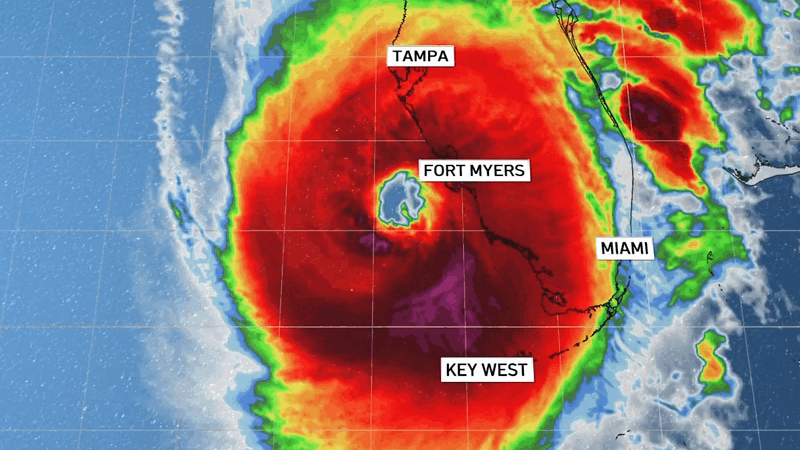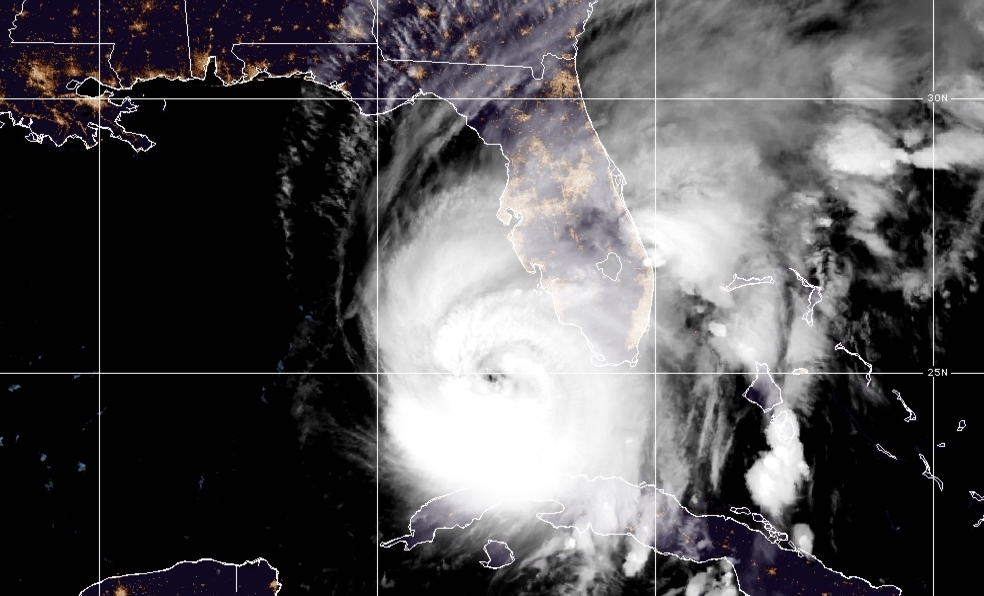While dangerous and powerful Hurricane Ian made landfall Tuesday in Cuba as a Category 3 storm, it has since been upgraded to Category 4, with winds over 150 mph.
And as it is expected to make landfall in Florida Wednesday, it's not slowing down anytime soon.
"The impacts are going to be far, far broader than just where the eye of the storm happens to make landfall," Florida Gov. Ron DeSantis said at a news conference Tuesday. "In some areas there will be catastrophic flooding and life-threatening storm surge."
With maximum sustained winds at 155 mph, Ian is expected to cause devastating storm surge, catastrophic winds and flooding along the state's heavily populated Gulf Coast from Bonita Beach to the Tampa Bay region, the National Hurricane Center in Miami said in a 6:35 a.m. advisory Wednesday.
According to the National Oceanic and Atmospheric Administration, hurricane strength is ranked on a scale of five categories, which are based entirely on wind speeds and estimated damage.
It's not until hurricanes reach a Category 3 or higher, however, that they are considered major storms in which significant damage and death is possible. Hurricane Ian, currently with winds at 155 mph, is 2 mph short of a Category 5 storm.
Here's a breakdown of each hurricane category, according to the National Oceanic and Atmospheric Administration:
Category 1: Winds 74-95 mph
These storms have very dangerous winds, capable of producing some damage. Well-constructed frame homes could have damage to roof, shingles, vinyl siding and gutters. Large branches of trees will snap and shallowly rooted trees may be toppled. Extensive damage to power lines and poles likely will result in power outages that could last a few to several days.
Feeling out of the loop? We'll catch you up on the Chicago news you need to know. Sign up for the weekly Chicago Catch-Up newsletter here.
Category 2: Winds 96-110 mph
Extremely dangerous winds will cause extensive damage: Well-constructed frame homes could sustain major roof and siding damage. Many shallowly rooted trees will be snapped or uprooted and block numerous roads. Near-total power loss is expected with outages that could last from several days to weeks.
Category 3: Winds 111-129 mph
Devastating damage will occur: Well-built framed homes may incur major damage or removal of roof decking and gable ends. Many trees will be snapped or uprooted, blocking numerous roads. Electricity and water will be unavailable for several days to weeks after the storm passes.
Category 4: Winds 130-156 mph
Catastrophic damage will occur: Well-built framed homes can sustain severe damage with loss of most of the roof structure and/or some exterior walls. Most trees will be snapped or uprooted and power poles downed. Fallen trees and power poles will isolate residential areas. Power outages will last weeks to possibly months. Most of the area will be uninhabitable for weeks or months.
Category 5: Winds 157 mph or higher
Catastrophic damage will occur: A high percentage of framed homes will be destroyed, with total roof failure and wall collapse. Fallen trees and power poles will isolate residential areas. Power outages will last for weeks to possibly months. Most of the area will be uninhabitable for weeks or months.
The Associated Press contributed to this report.




